Integration. It sounds simple enough, but given the way the world has become these days, the idea has complexity written all over it. Gone are the days when a car had features you could count on all your fingers, when an in-car entertainment system was called a cassette deck (or four-track cartridge player) and when brakes were just brakes and didn’t have three-letter acronym suffixes attached to them.
No, these days, we need integration, because there’s simply more. Modernisation – or, if you prefer, progress – means that a plethora of technology is available in an automobile today, and all those new functions and features has brought about a serious need to redefine the terminology of the genre. After all, even functions have subsets these days.
Associating these and presenting them to the user is the perennial headache. So, what’s a manufacturer to do? Well, grouping them seems a smart enough idea, and giving a specific name to that particular bunching an even better one.
Thus, you’ll find that the likes of auto start/stop, brake energy regeneration, lightweight engineering and electric power steering are now assembled as a family of positives. In the case of BMW, these come under the banner called EfficientDynamics.
While that takes care of the mechanicals, it doesn’t sort out the other stuff, things that don’t fall under the ambit of ED, not directly, even if they happen to share the same body. Solution? Placing all the rest together into a singularity and cleverly calling it ConnectedDrive, which thus puts all the king’s men into two cleanly configured and coexisting sets – a rather novel idea, you think?
EfficientDynamics has been presented in significantly large fashion, even if not all the accomplices in the group have been made present for consumption here in Malaysia, but nevermind that. With that association pretty much nailed, the next step is of course to present ConnectedDrive and make it the next household term.
The best way to do this, naturally, is to showcase the host of technologies within that umbrella, which is just what BMW did in a dazzling blitz of presentations at an Innovation Days – ConnectedDrive meets EfficientDynamics event in Munich late last year.
Since there are so many things to talk about (well, it really was a blitz!), we’re going to have to do it over two parts, starting with the communications, infotainment and personalisation aspects first, with the driver assistance stuff – which crosses into ED territory – covered in the next article.
Full story after the jump.
Rather intriguingly, ahead of the visit to Munich, there was an Eco-Drive event in Bali, one that sought to showcase EfficientDynamics through on-ground application of the tech. Unfortunately, while Bali is many things, it is also probably not the best venue to measure driving efficiency or attempt efficient driving.
Effectively a 101 primer for the lifestyle media (don’t ask how we ended up there; it was also my first day at work here!), much of the presentation was simplified. An assortment of cars was present, these being the X1, X5, E90 and F10 as well as the 5 Series GT present. Severely condensed presentations aside, the challenge was to see who could return the best fuel consumption over a 30-plus km return trip to the Peak and back, with the idea that one would be competing with another set of drivers in the same car doing the same route.
It turns out this wasn’t the case, and the best fuel consumption proper took the gong, which meant anyone taking a diesel job would strike bingo (which they did, in an X1 oil burner, at 7.0l per 100km). In a 523i, which was just about all that was left when it came to taking the keys, I managed to get an 8.2l figure, with countless upshifting and the most feather-like of touches on the pedal. Efficient? Yes. Dynamic? Not by any measure. Still, the event did serve to show that the current model range is frugal, if you are too.
That accomplished, it was on to Munich and ConnectedDrive, and there was plenty to be digested in the whole shebang. Across an entire day, there were both practical on-road demonstrations of applications as well as numerous technical displays. While a good number of these are still in development mode, expect a fair number to be translated into production models in the very near future. If you can imagine most of the tech crammed into a car, you’d be thinking of the BMW Vision ConnectedDrive, which made its debut last week in Geneva.
Essentially, the company says that Connected Drive is a unique portfolio of innovative features that enhance comfort, raise infotainment to new levels and significantly boost safety in BMW vehicles. With it, the car is no longer just a car, but effectively a personal concierge, guardian angel or entertainer, as the situation demands.
Strong claims, and very colourful ones at that, but there it is. Certainly, the array of tech and solutions in the projects seen at Innovation Days was mind-boggling. All seek to further link-up the driver, vehicle and surroundings, and while you wonder just how many will eventually make their way into cars (especially in our market!), the ideas they present have much appeal. Here’s a brief look at the emerging technologies in the areas of infotainment, communications and navigation:
The key to integration
The car key of the future will move beyond just being able to store vehicle-related data or driver-specific settings, and progress into an all-in-one tool along the travel chain and in everyday use.
A research prototype utilising a Near Field Communication (NFC) interface and a security controller demonstrated the kind of possibilities along these lines, where the key is able to store tickets for public transport (KeyTicketing) as well as vehicle information (KeyInfo) and can be used to make payments (KeyPayment) and opens not just cars but hotel rooms as well (KeyAccess). Quite litreally, the driver can accomplish point to point transactions from the car, all contactless and paperless at that.
KeyPayment doubles up the key as a contactless credit card – micropayments of sums up to 25 euros can be made quickly and simply, with larger sums requiring additional authorisation by the customer. As for KeyInfo, it allows the driver access to important vehicle information away from the car. Currently, obtainable data includes the open or closed state of the vehicle, mileage, fuel level, battery charge level (for electric vehicles), latest alert messages, service data, GPS location of the vehicle and stored tickets. The user’s mobile device acts as a display unit, with the sensitive data remaining on the key.
If the key is lost, security modules and devices that determine who can access the data embedded in it ensure that the channels are suitably protected, and disabled by a single phone call. When it comes time to sell the car, the embedded chip that holds the data can be removed, and all the new owner simply has to do is get a new one to kick off things again. The presentation made it all look so easy; I suppose in Europe, it will be. Definitely handy, but we’re not likely to see it here for a long while.
More than a remote chance
Adding on to features already on a remote, which currently allows individual operations to be controlled from outside the car such as locking and unlocking doors or adjusting the climate control, functions can be carried out via a smartphone application called My BMW Remote.
Via your smartphone, the remote will be able to, for example, access the climate control to create the desired temperature; the vehicle itself decides – on the basis of the outdoor temperature measurement – whether it needs cooling via the ventilation system.
And if you can’t remember where you parked your car, the Vehicle Finder function should prove helpful. It locates up to a range of up to 1,500 metres, with a static map showing the driver the way. In the future, vehicle data such as fuel and oil levels, as well as vehicle status (locked or not, windows and soft-top or sliding roof opened or closed) will be available. As standard, the display shows the vehicle status after last being locked.
Let the music play on
It’s called the Seamless Media Access research project, and it virtually makes the entire contents of an entertainment system from home available on demand in the car. Here, your playlists or most recently played content are automatically synchronised between car and home, which means that content will be available on the relevant device – including the car – at any time.
In all, Seamless Media Access offers three specific functionalities: aggregated search, intelligent play history and a browsing function. The search function allows one to find content from a particular medium (music, audio book, video), while the intelligent play history allows seamless playback of content when switching from the home to the car or vice-versa. Listening to chapter two of your audio book at home, and want to continue in the car? Done.
While searches can be done offline, downloads need to be done online, with optimal means of transfer (WLAN, UMTS or LTE) still being explored, with user data stored on the server of a cloud provider offering a further, more stable, option.
Mood music, or music for your mood?
Connected on to the web, you can access beyond what’s on your own server, and to help things along in terms of selection is the Mood-based playlist, a research project being pursued by BMW’s engineers. The basis as well as reference for the mood-based music selection in the research prototype is provided by Gracenote Music Mood Analysis technology
The feature allows rapid and intuitive access to music that matches the driver’s preference at any given time and which precisely matches his tastes and preferences. Solely on the basis of a selected mood, the playlist presents a pre-selected compilation of music which the driver can narrow down by choosing further parameters such as genre or time period.
In the research prototype, the user chooses from a matrix covering the four extremes “angry”, “peaceful”, “celebrating” and “hopeless” (the last seems a rather poor choice for driving material, no?), and intermediate moods can then also be defined. The closer the driver’s choice is to one of the extremes, the clearer the selection and preliminary sifting of the music.
You’ve got mail
Integral email and Outlook functionality is also being explored at length. With direct access to the mail exchange server, you’ll always be connected to your mailbox on the move. The only requirement is to have the BMW ConnectedDrive SIM card in the vehicle, which enables access to the mail exchange server at UMTS speed, where available.
With just about every function available to go about working your mail (reading, deleting, calendar, appointments etc), so in the interests of safety, the email function is restricted when the car is moving; the driver is only permitted access to the inbox display and being informed of incoming emails, with full accessibility only when the car is stationary. If you’re sitting in the back, well, everything can be had on the go.
Speak your SMS
There are already significant milestones in voice control, from its utilisation in selecting navigation destinations, music selection off the embedded HDD, of navigation, entertainment and telephony/communications. Now, Message Dictation looks like joining the party. It enables the driver to dictate free text in the car and thus “write” short messages – simply by speaking.
What this means is that brief emails or text messages can be easily composed by voice without having to take your hands off the wheel, or your eyes off the road. As with comparable desktop applications, punctuation and commands such as “new paragraph” also have to be spoken while dictating.
The actual speech recognition takes place on a server outside the vehicle as you are speaking, since free text recognition benefits in the first instance from the size of the back-end vocabulary (millions of familiar words). In the car, the recognised text is then displayed or read out.
A touchpad for the iDrive Controller
The iDrive Controller looks like it may get an integrated touchpad, offering more intuitive, faster and easier operation. Mounted directly in the central control knob, it allows for even more intuitive operation – without direct eye contact.
The integral touchpad barely takes up more installation space than the iDrive Controller used so far, so it’ll be relatively easy to install into future vehicles. The controls for entering, selecting and confirming are sited close together, enabling a seamless transition when switching between voice input, touchpad and rotary knob operation.
Its biggest plus point is that it can facilitate and speed up the input process, especially handy with GPS use. At the moment, the desired letter is selected via the “speller” – a circular arrangement of letters in the display – using the rotary knob and confirmed by pressing it. With the integral touchpad, it will be possible to write letters on the surface of the rotary knob with your finger. The touch-sensitive surface recognises the letter and the speller immediately jumps to it, speeding up the process.
Bringing the iPod closer to home
While BMW has long been integrating Apple gear with its cars (the brand was the first to integrate the iPod to the car’s audio system, in 2004), this one brings the Apple experience closer to home – iPhone and iPod users can access all their product’s features via Apple’s own interface shown on the dashboard display, with operation via the car’s controls.
The Apple iPod Out function works with the iOS 4.1 operating system on the iPhone 3G, iPhone 3GS, iPhone 4 or iPod touch (second and third generation). iPod Out also gives the user direct access to other iPod functions such as Genius, for example.
And while you’re waiting, here’s the micropause
Never be bored or idle ever again in a car. It’s called the micropause, and the idea behind the project is to provide the driver with a diverse variety of applications – ranging from simple news headlines to videos or games – whenever the car is at a standstill, say at a traffic light.
The first prototype has active communication between the traffic lights; the vehicle allows the lights to send information to the car. As you approach an appropriately equipped traffic light, the vehicle receives information on the current traffic light phase, and as soon as the car comes to a halt at a red light, it checks the remaining waiting period and automatically launches appropriate micropause apps, some designed for waiting times as short as ten seconds.
So you can get brief news bites if it’s just a short time window, and longer media material in longer stops; interactive apps such as Pacman are also being looked into. The micropause will contain a small background countdown to indicate the seconds left before the lights change, and appropriately fades the app before then. In the research vehicle, the content is displayed via a freely programmable instrument cluster, since this is in the driver’s immediate field of vision, but the HUD can in the future be used for this purpose.
It’s called microNavigation
Inside an unfamiliar multi-storey car park, and don’t know where the entrance is, or how to get from there to a specific location within the car park as quickly as possible? Well, here’s where microNavigation comes in to assist.
The project is developing a system – with a 3 Series as a prototype mule – that will allow complex enclosed areas not covered by road maps or only partially covered to be visualised in a detailed, large-scale map display. Before getting out of the vehicle, the driver will already be able to see how to get to a specific point within the destination area. His mobile device then directs him the last part of the way on foot to the end destination and, of course, navigate him back again to his vehicle when he wants to return.
Specifically, the system works like this: the driver can check out his destination in advance, either at home or enroute in the car, and find out if a “microMap” is available. If so, a detailed destination can then be selected within the microMap; the map data plus destination is then automatically transferred to the driver’s vehicle, where it is added to the existing navigation data.
By integrating camera information, GPS coordinates and map data, the researchers have also developed a lane-level vehicle positioning system. The driver is navigated to his destination, for example a vacant parking space near to the most convenient lift in lane-level accuracy. Upon getting out of the car, the data is transferred to the driver’s mobile device, allowing him to be navigated all the way to his destination.
Adaptive navigation – one route, three arrival times
In getting you to your destination, existing navigation systems do take into account traffic information and use it to avoid congestion (well, in other places it does!). Due to the high traffic volumes, however, the strategy is rapidly reaching its limits as recommended detours quickly become congested, not aided by the tricky aspect of predicting actual traffic volumes.
These two factors make it hard to accurately estimate arrival times. The BMW solution to this is called adaptive navigation, and it takes into account historic traffic data (working back over a specific period of time) so a variation range can be calculated for any given road, helping to make journey times, particularly in town, much more predictable and more transparent.
Whereas a conventional navigation system only gives one estimated time of arrival (ETA), adaptive navigation offers three: the typical, average ETA, an optimistic ETA based on the driver catching a series of green traffic lights, and a pessimistic ETA that assumes the route will be affected by traffic disruption. A driver setting off for the airport might therefore choose to plan his journey around the later (worst case) arrival time, whereas for a drive out into the country, he can assume the earlier time.
Naturally, the most efficient means of obtaining the best data is working with people who know, er, best – after all, nobody has a better inside knowledge of traffic data and events in a given city than the city authorities themselves. The project is working with a number of towns and cities in Germany to make traffic management data and information about temporary disruptions – such as roadworks or special events – accessible to navigation systems and to take this into account in route planning. Guess we won’t be seeing this one here anytime soon.
And finally, we have Mobility Assistant
What can be done to ensure a punctual arrival even when the navigation system indicates congestion? Will a parking space be available on arrival? Where is the nearest recharging point for an electric vehicle? Will park and ride get the driver to his destination more quickly, or more conveniently? Sure, these questions may not be relevant now (again, for us at least), but perhaps one day in the future we’ll get to asking them.
Enter Mobility Assistant, which is currently undergoing testing in Berlin as an iPhone application, as well as on selected MINI E customers in the same area as a cross extension of the service. Mobility Assistant essentially allows individually customised navigation using different modes of transport. When a destination is entered, the Mobility Assistant will show various possible ways of getting there – whether by car, by local public transport or by a combination of the two.
Depending on the details entered, the users will be presented with a range of options for reaching the desired destination conveniently, quickly, or using a preferred form of transport. The user enters his starting point and destination, which can be anywhere he is, and his preferences for a particular mode of transport – the routing modes comprise bus and rail, car and park/ride. As soon as the choice is made, the application presents various suggestions as to how to reach the destination.
On his mobile, the user can immediately see which modes of transport will be used for which sections of the various routes, as well as the duration of each option. Connections can be checked out in more depth by choosing to “show details”, which will display journey routes, pedestrian routes and map information. Details at this level include up-to-the-minute information about current parking availability at park/ride carparks, details of fees and whether electric vehicle recharging points are available.
Phew! That just about covers all the stuff in the first part of things. The verbiage concludes with the driver assistance systems in the next article.
[zenphotopress number=999 album=2054]
Looking to sell your car? Sell it with Carro.


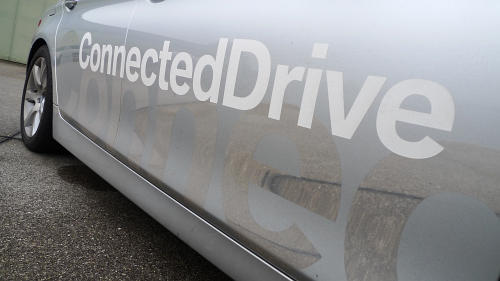

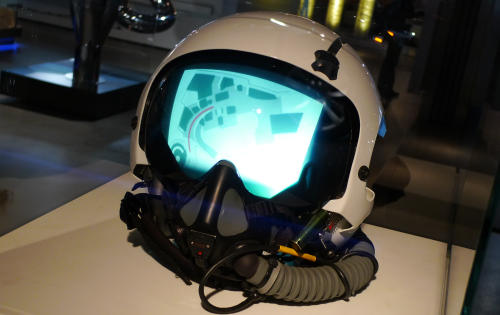



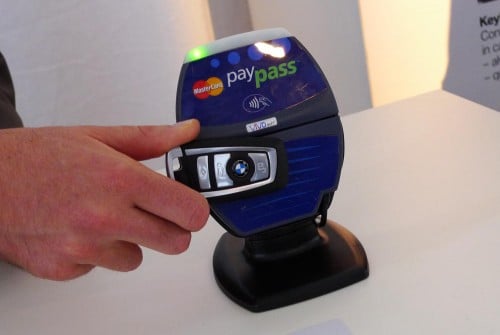
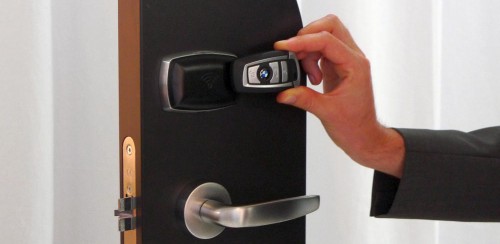
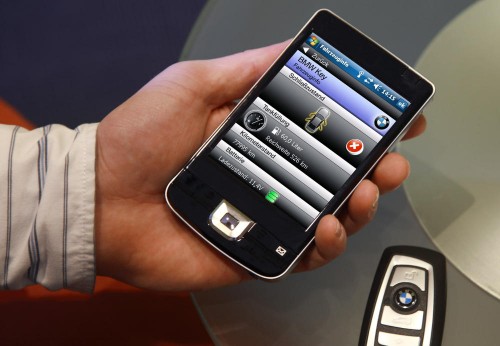
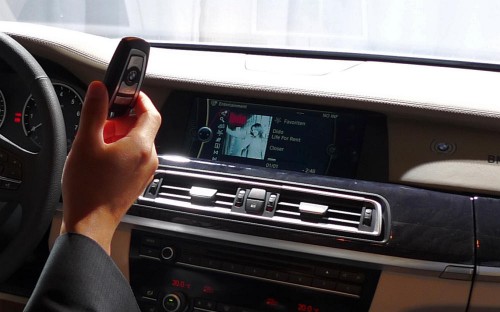
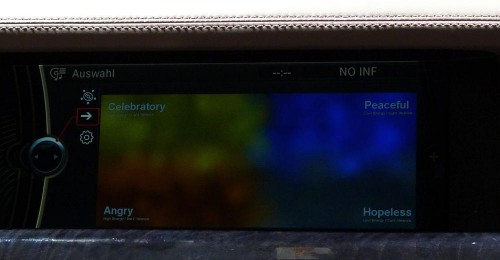
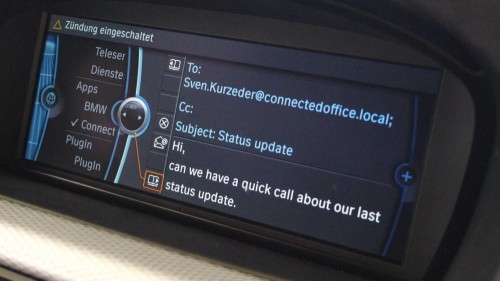
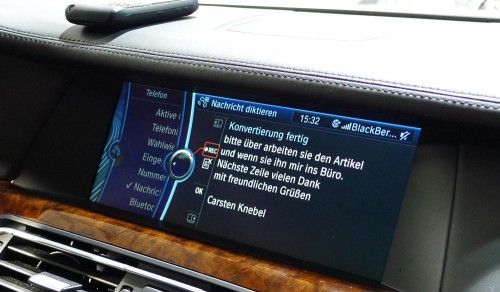
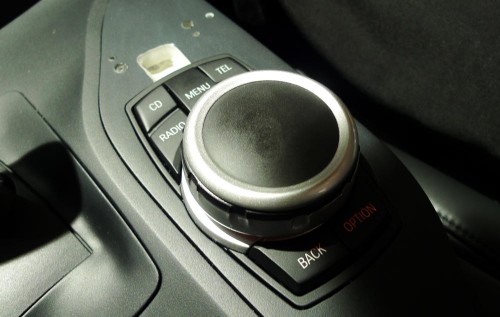
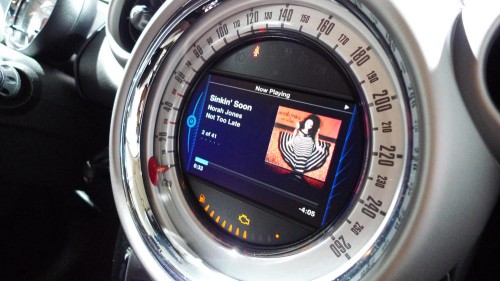
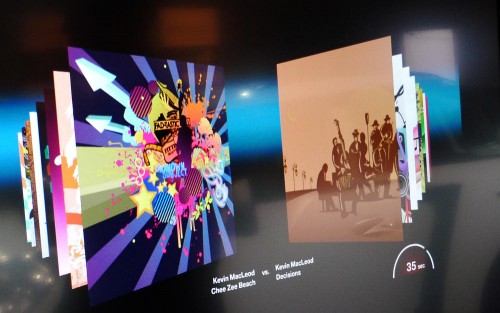
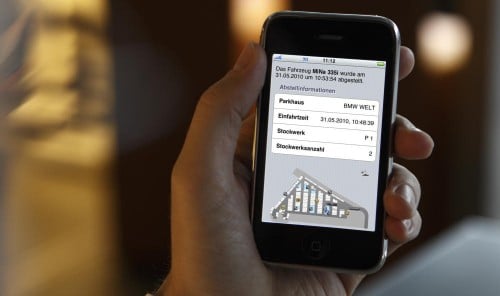
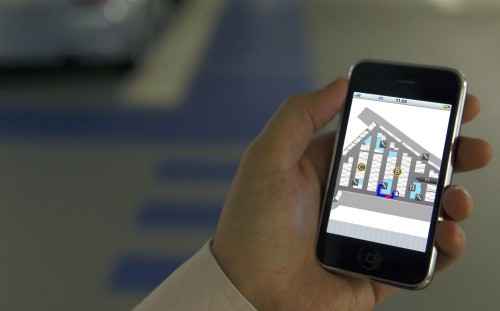
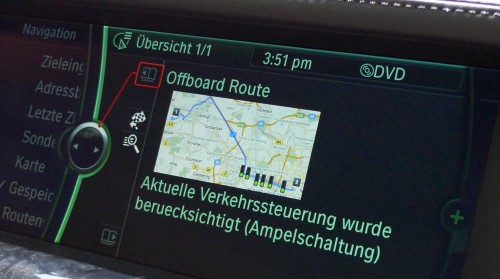
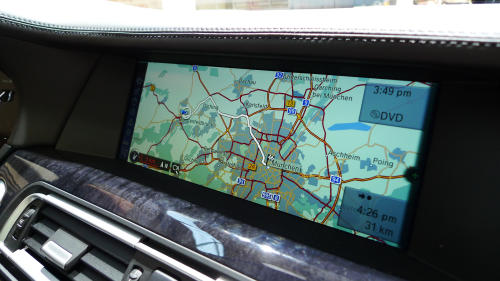
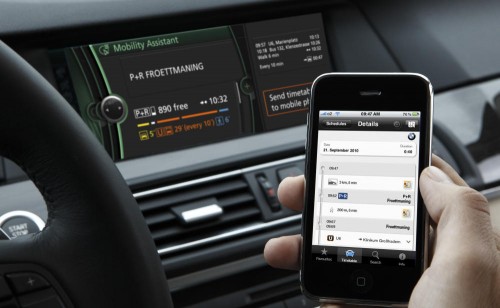
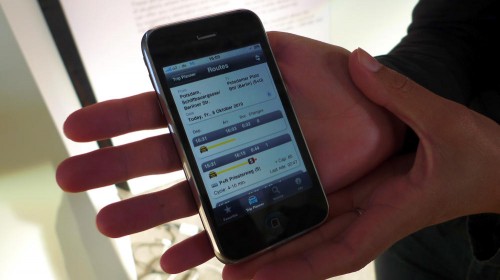







































Don’t mean to diss technology but will this lead to the dumbing down of drivers?
as a geek .. this looks freaking cool to me!
but as also someone who are kindof into computer security field .. the connectivity between cars and home computers looks scarily exploitable for nasty stuff ..
Hope they didn’t outsource the system to Micro soft. Goodness knows how many times my PC crashes in a week. :-)
or worse .. remote carjacking using just a computer and internet connection XD
Imagine if your car gets a virus.
My advice to you is don’t use pirated software from pasar malam.
That’s why BMW (of course, not just beemer) is not the car for those people where all they want is to start the ignition key and just drive.
This is certainly not the car that will get your butt up early in the morning (or late at night) and do some driving…just you and the car…
High tech? Yes…
Exciting? Yes…during cut queue in jam
Driving pleasure? Doubt it as I will be looking at the screen most of the time and missing the scenery outside or the engine sound (If that’s the case, why don’t I let the computer does all the driving instead, which is the part I hate the most)
Just my 2c…
I have to digress. all this tech is some what of an overkill. the true joy of driving lies in the holy trinity of driver, chassis and engine. nuff said.